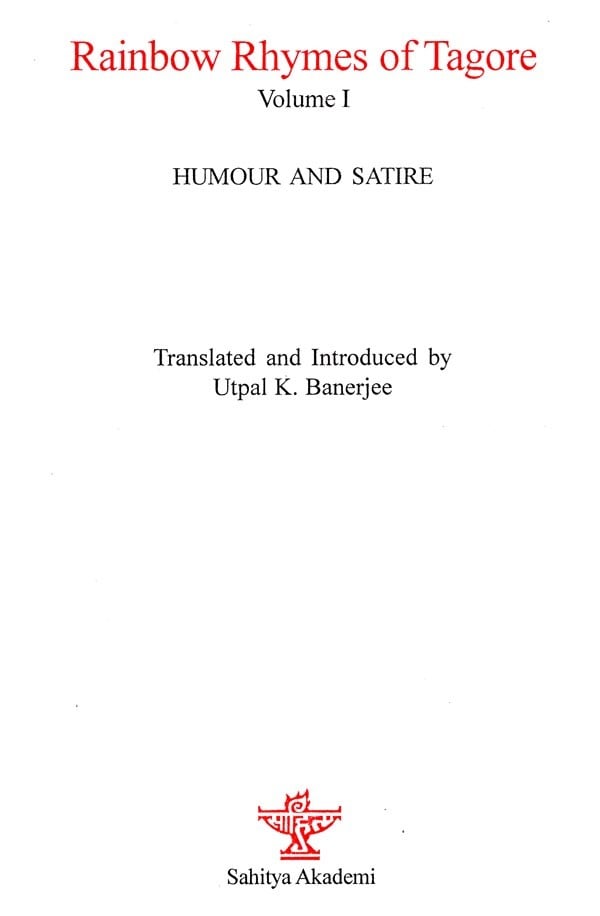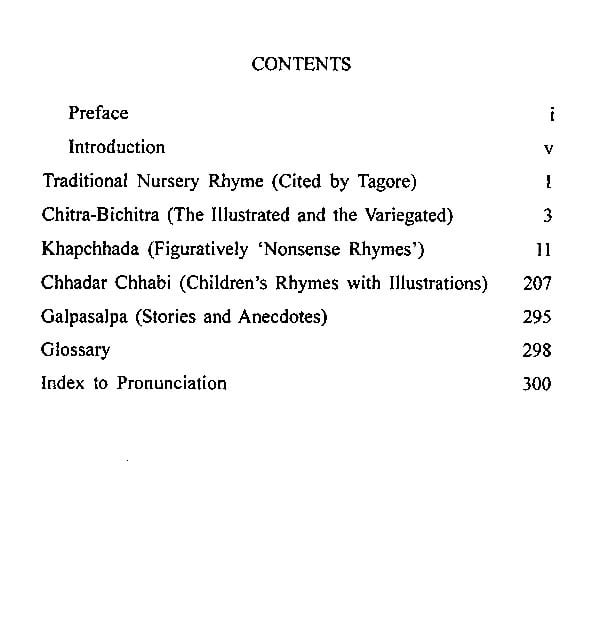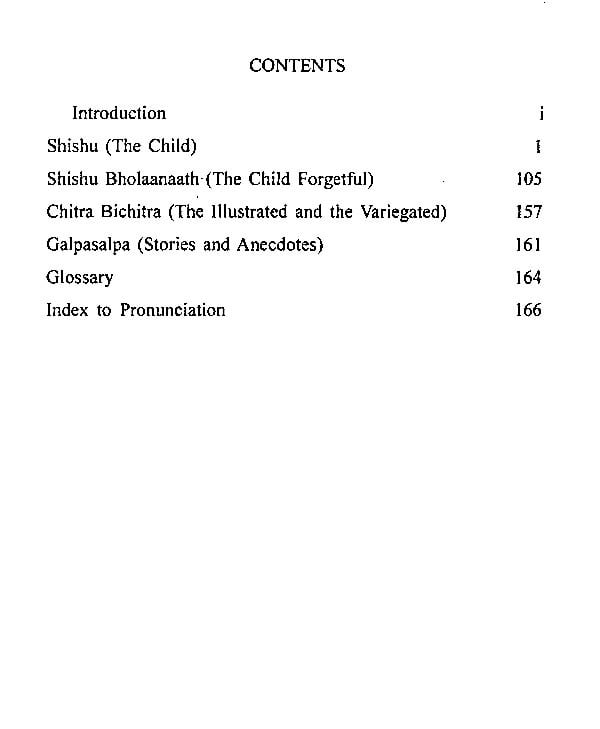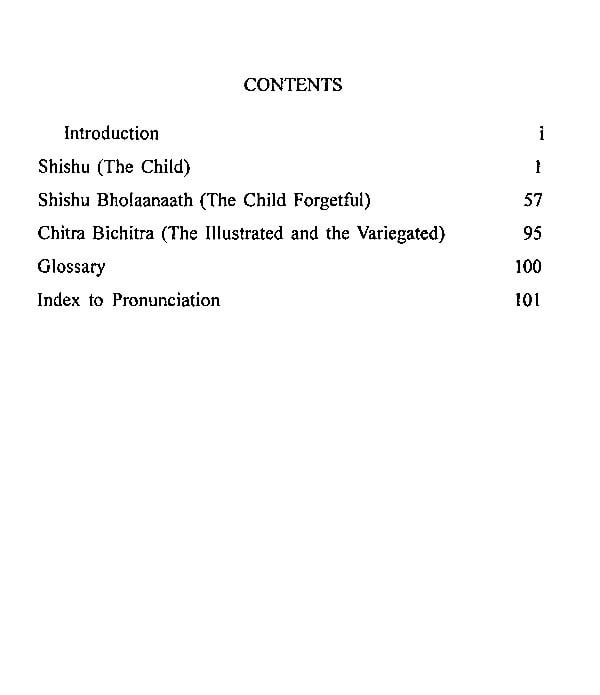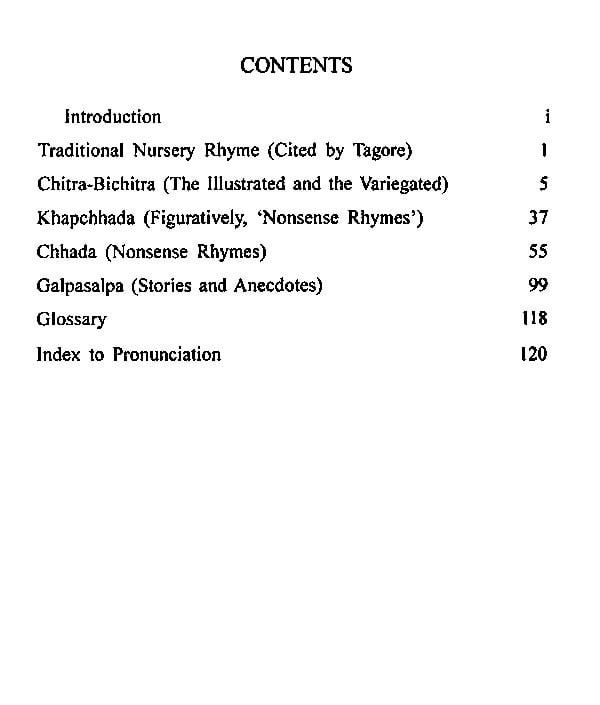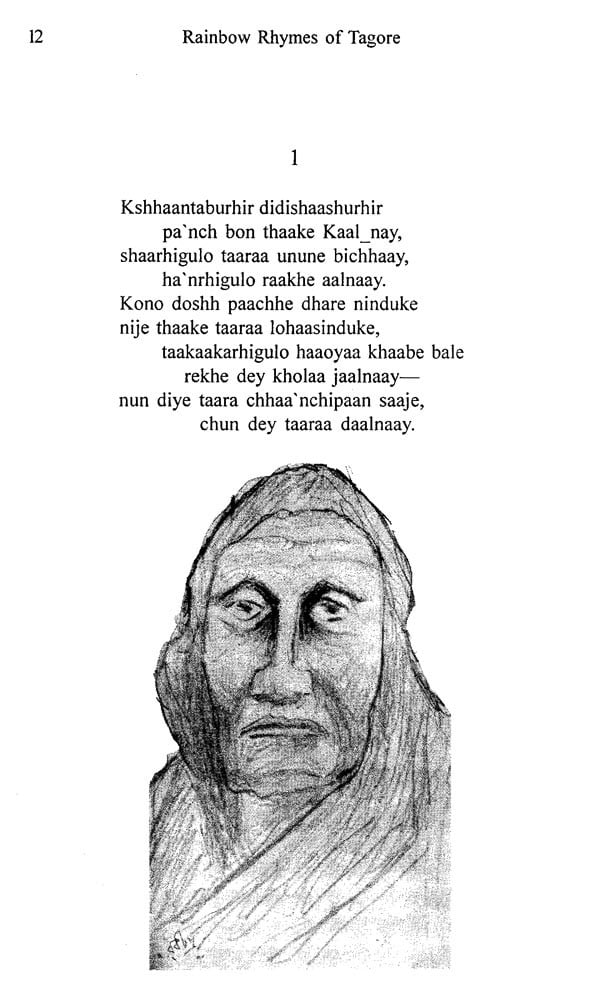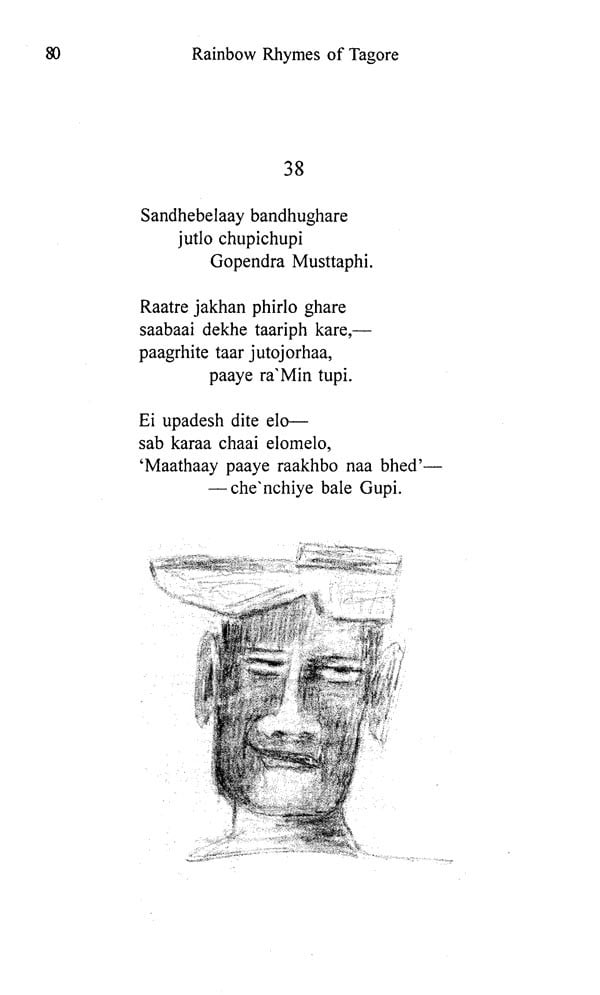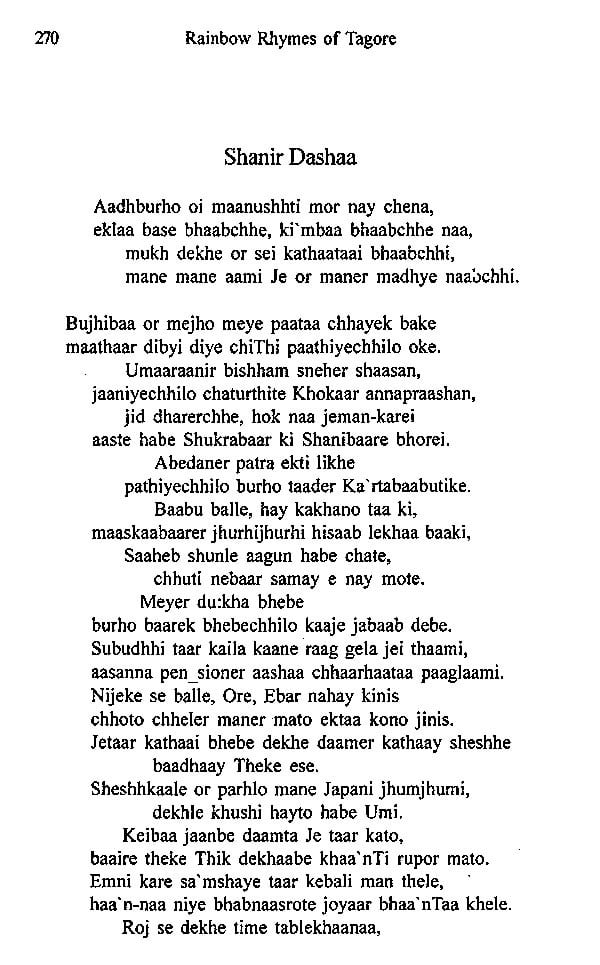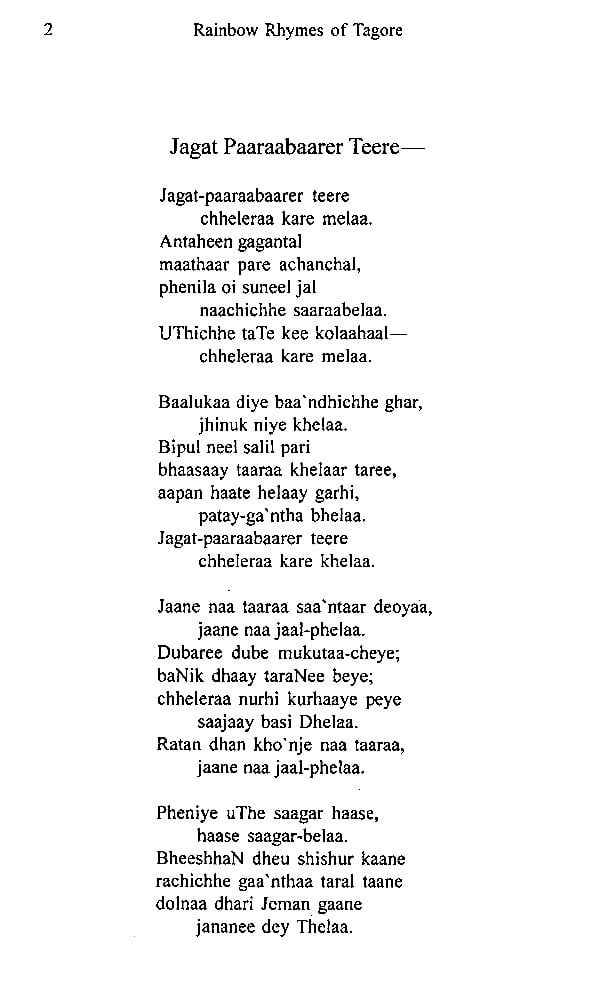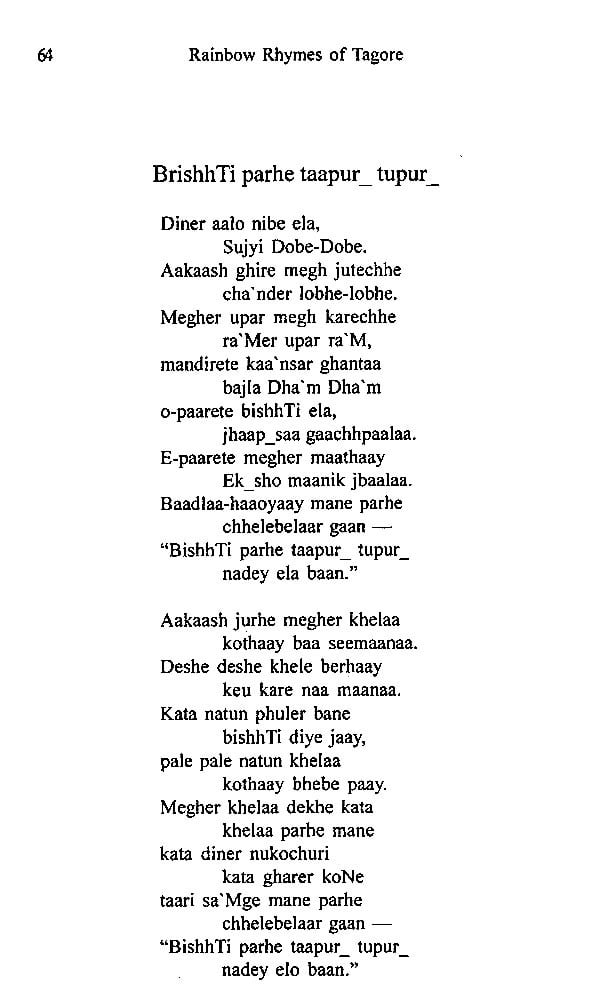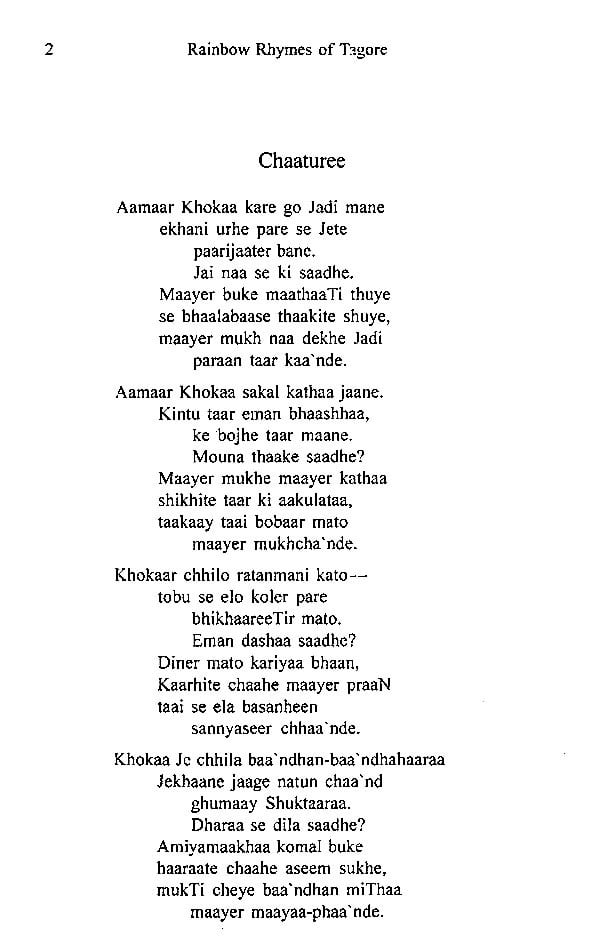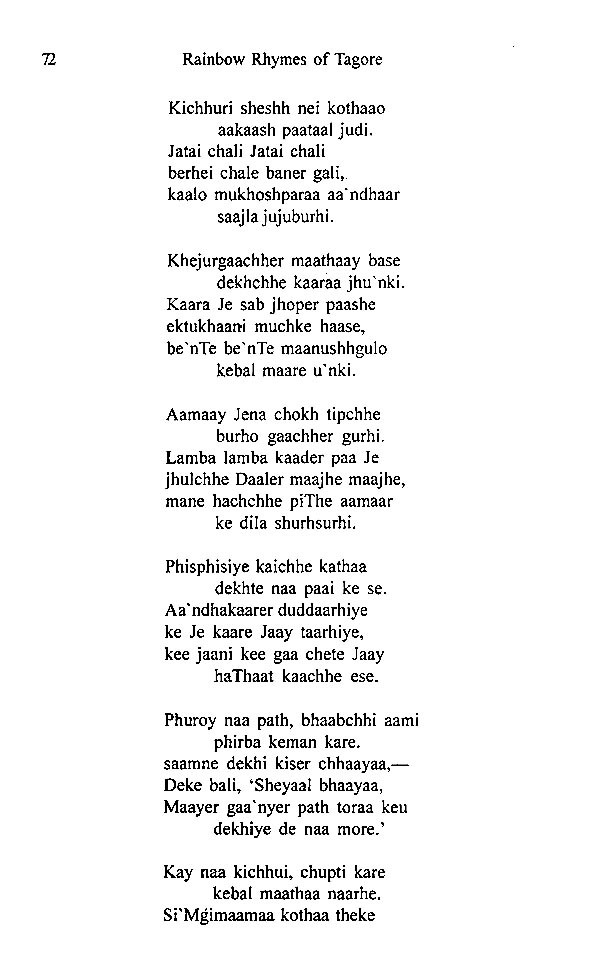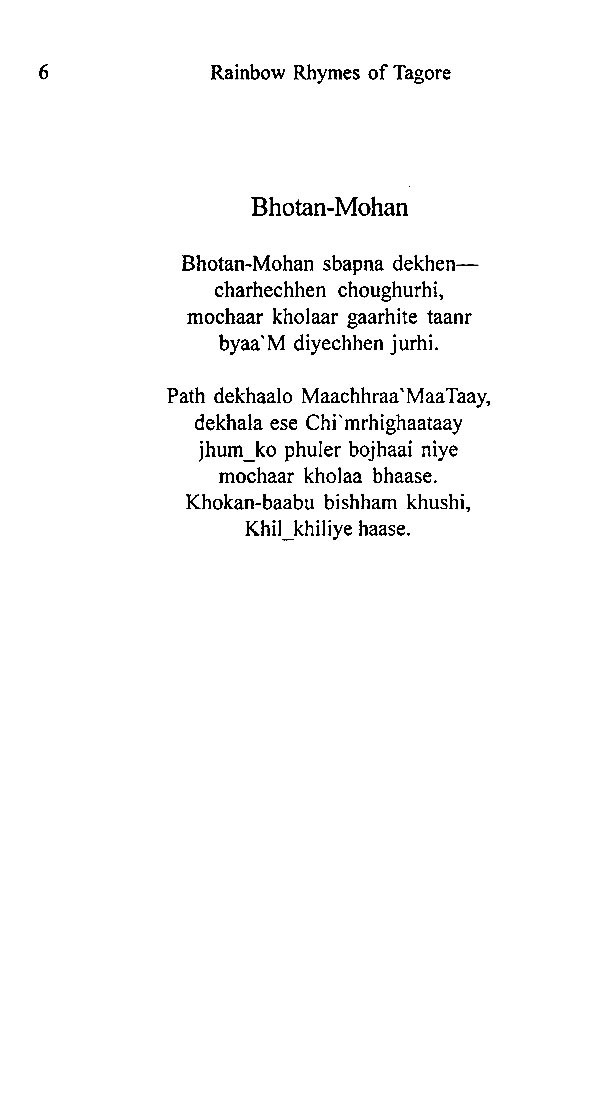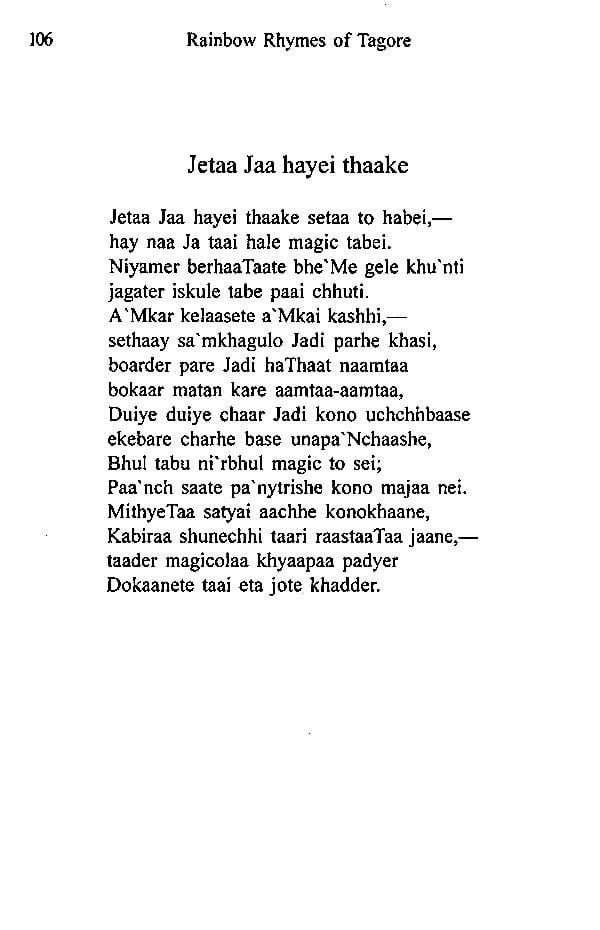About the Book The streak of fun and frohes in Tagore's luminous persona was amply manifest in his children's rhymes in Chitra-Bichitra (1954, drawn from Sahaj Path, 1929), Khapchhada (1936) and Chhadar Chhabi (1937), rendered here in rhymes and meters as commensurate with Tagore as feasible. While penning these poems perhaps more as pleasant diversions from his more onerous genres of writings and paintings over the last decade of life he brought up vivid scenes from Bengal's rural and semi-urban life; the nuances of the countryside, and intimate vignettes of Bengal's private homes. Placing the rhymes in fairly familiar surroundings, he made some startling comments on stock characters or stock situations (concretized in our times by Walter Lippman as 'Stereotypes'). Alternatively, he conceived of again never losing his humorous tone primordial images of varying complexity to reflect universal behaviour-patterns (visualized much later by Carl Jung as 'Archetypes').
About the Author Utpal K. Banerjee (b. 1935) was an adviser on Management and Information Technology for thirty-five years and held many prestigious positions in various projects of Art and Culture of Government of India. He has been regularly writing on the art and culture in several newspapers and journals, including India Perspective and published many books viz. Hindu Joy of Life (2006); Indian Performing Arts: A Mosaic (2006); Millennium Glimpses of Indian Performing Arts (2006); Indian Theatre in 21st Century (2008); Exuberance of Indian Classical Dance and Indian Contemporary Dance Extravaganza (2010): A Journey With the Buddha (Vol. I & II, 2010): Tagore's Mystique of Dance (2011); Luminous Harmony: Indian Art and Culture (2011); Tagore-nama (2011). He received Senior Fellowship from Ministry of Culture, Government of India, 2008-10 and Padma Shri award from the President of India in 2009.
Preface I must confess that original inspiration of doing Rainbow Rhymes translating children's Rabindranath Tagore (1861-1941) came Rubaiyat Omar Khayyam, globally-celebrated translation-work Edwards FitzGerald (1809-1883): published 1859, 1868, 1872, and finally editions, followed innumerable versions reprints ever since. found remarkable Khayyam (1048 1131), the versatile Persian poet, mathematician and astronomer, had wait for around eight centuries before exquisite Rubais quatrains couplets original) could their English manifestation for wide FitzGerald much renderings were known for fidelity! Tagore's elegant rhymes meant children (and adults)-and far longer couplets Khayyam-have not reached the English-savvy readers. was keen windows of the world complete oeuvre rhymes-numbering nearly against Khayyam's 101 couplets translated by FitzGerald-and undertake daunting task full rhyming and metrical pattern, the original as possible. While wanted to allow Tagore's treasure-trove to wait for posterity anywhere long Khayyam's did, did not wish my own fidelity.
When was penning Tagore-Nama: Studies Across Plays, Poems Rhymes (Abhinav Publications, Delhi, 2011), my English, initially first stanzas of over 200 poems and to carry the flavour the original to non-Bengali readership.
Introduction Tagore's funny and frolicking rhymes, penned half in jest and half-seriousness, occasionally touching rare pathos, presented here from 'Chitra-Bichitra' (two selected poems), Khapchhada (98 rhymes out of total 105), 'Chhadar Chhabi' (all poems), and 'Galpasalpa' (one selected poem), 133 all total, starting quoted sure-fire control on the mystique as well as the magic nonsense rhymes began early love, supported his own effort traditional ones. Once he began to perhaps more as pleasant diversion from more serious genres writings, would bring up-before reader's very eyes-vivid scenes from Bengal's predominantly rural (and occasionally urban) life, inherent rhythm cadence of countryside and nuances intimate vignettes Bengal's private homes. Situating unexceptionable milieu, made-for reader's unsuspecting intellect some telling comments stock characters and/or stock situations of own times. He would also conceive of again never losing his mirthful tone-primordial varying complexity reflect universal behaviour patterns.
Many these poems are, to that extent, with clear-cut notions about characters situations widely found practice and recognised as such. Such labelling-or categorising what each of us does, consciously unconsciously without even noticing, because, mostly casual situations, it too difficult to cope with all the complexities the other people individuals. We often tend simply label and catagorise the other person.
Tagore's 'Chitra-Bichitra', meant primarily for beginners, etches two such delightful labels: complaining youth unable to cope with strictures imposed during convalescence Bisham Bipatti (the Dire Predicament); and lazy, eternally drowsy **Contents and Sample Pages**
